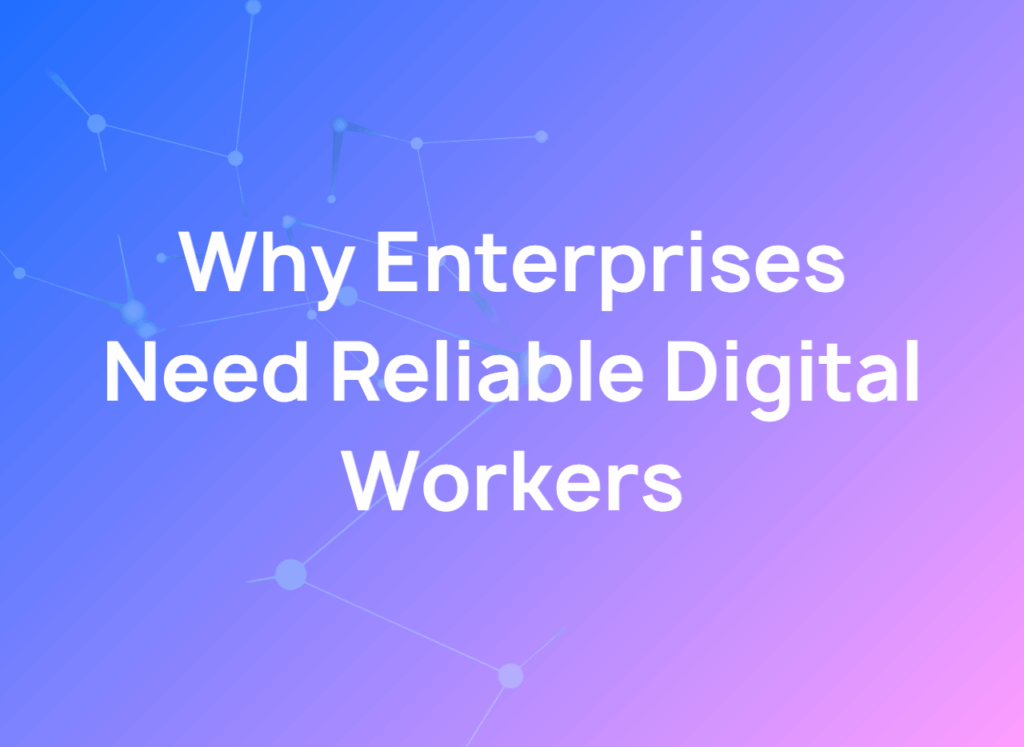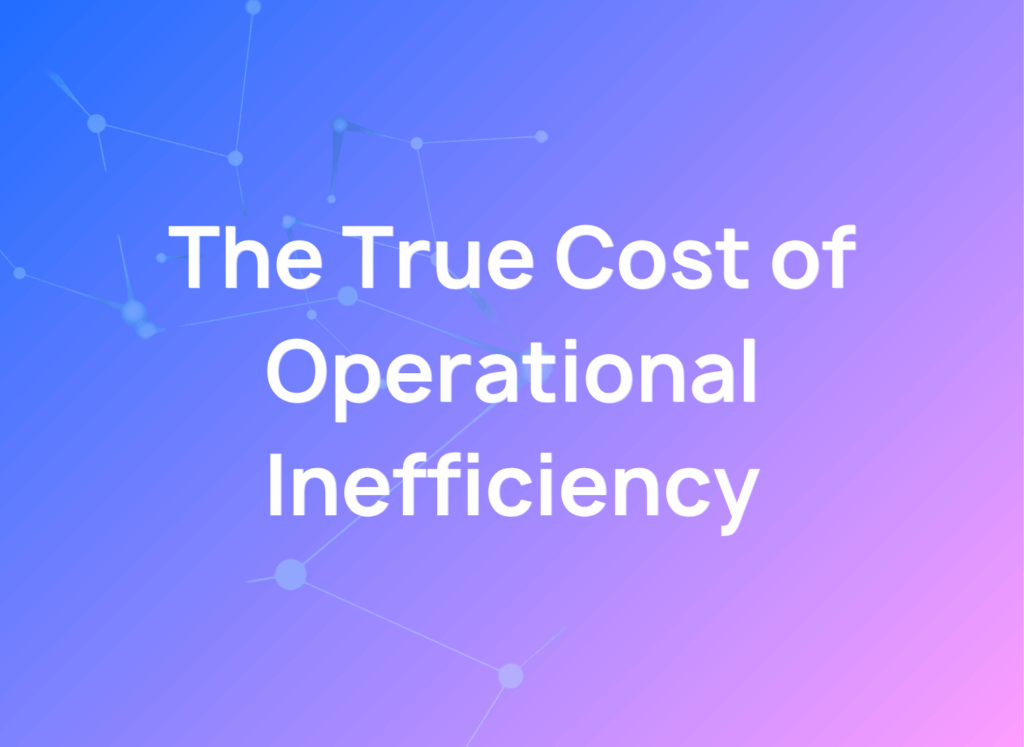AI Demand Forecasting: Transform Your Supply Chain Operations
AI Demand Forecasting: Transform Your Supply Chain Operations
Supply chain executives face unprecedented challenges. Economic volatility, geopolitical tensions, and evolving consumer demands create a perfect storm of uncertainty. Traditional forecasting methods—built on historical data and human intuition—can't keep pace with today's dynamic markets.
The solution isn't more complex spreadsheets or additional analysts. It's AI demand forecasting that transforms how you predict, plan, and respond to market changes. This technology doesn't just improve accuracy; it revolutionizes your entire operational approach.
The Current State of Supply Chain Uncertainty
Modern supply chains operate in an environment where 71% of organizations report significant disruption impacts. Economic uncertainty affects 47% of executives, while supply chain challenges follow at 44%. These aren't temporary setbacks—they're the new operational reality.
Mid-market companies face particular pressure. Without the financial buffers of large enterprises, they must optimize every decision. Traditional demand forecasting methods fail because they rely on static models that can't adapt to rapid market shifts.
Consider the cascading effects of poor demand forecasting:
- Inventory imbalances leading to stockouts or excess carrying costs
- Production planning inefficiencies that waste resources
- Supplier relationship strain from inconsistent orders
- Customer satisfaction decline from unreliable delivery
The cost of inaccuracy isn't just financial—it's strategic. Companies with outdated forecasting lose competitive advantage in markets where agility determines success.
AI Forecasting: Beyond Traditional Methods
AI demand forecasting represents a fundamental shift from reactive to proactive operations. Unlike traditional methods that analyze past patterns, AI systems understand complex relationships between variables that human analysts might miss.
How AI Improves Forecasting Accuracy
Real-Time Data Processing: AI systems continuously ingest data from multiple sources—sales transactions, market trends, weather patterns, social media sentiment, and economic indicators. This creates a comprehensive view that traditional methods can't match.
Pattern Recognition: Machine learning algorithms identify subtle patterns across vast datasets. They recognize seasonal variations, promotional impacts, and market anomalies that would overwhelm human analysts.
Adaptive Learning: AI models improve continuously. Each forecast generates feedback that refines future predictions, creating a self-optimizing system that becomes more accurate over time.
Multi-Variable Analysis: AI considers hundreds of variables simultaneously, understanding how they interact and influence demand. This holistic approach captures market complexity that linear models miss.
Automated Demand Forecasting in Action
Leading organizations deploy automated demand forecasting to transform their operations:
Retail Giants use AI to predict demand across thousands of SKUs, optimizing inventory levels and reducing waste by 25% while improving availability.
Manufacturing Companies leverage AI forecasting to align production schedules with anticipated demand, reducing inventory holding costs by 30% while maintaining service levels.
Distribution Networks implement AI systems that predict regional demand variations, optimizing warehouse placement and transportation routes for maximum efficiency.
Digital Workers: The Future of Supply Chain Operations
CausaLens Digital Workers represent the next evolution in supply chain automation. These aren't simple software tools—they're AI-powered agents that perform complex analytical tasks autonomously.
What Are Digital Workers?
Digital Workers are custom-built AI systems designed to handle specific operational functions. Unlike generic AI tools, they're trained on your unique processes, data patterns, and business requirements. They operate continuously, providing always-on analytical capability that human teams can't match.
Each Digital Worker understands your industry context, company-specific challenges, and strategic objectives. They don't just process data—they generate insights, recommendations, and actions tailored to your operational needs.
Benefits of Digital Workers for Supply Chain Operations
Reduced Operational Costs: Digital Workers eliminate the need for large analytical teams while providing superior insights. Organizations typically achieve 500% ROI by reducing consulting fees, software licensing costs, and internal resource requirements.
Improved Efficiency: These AI agents work 24/7, processing data and generating forecasts continuously. They eliminate bottlenecks that slow traditional forecasting processes, delivering insights when decisions need to be made.
Scalability: Digital Workers adapt to changing business needs without additional hiring or training. As your operations grow, they expand their analytical capacity automatically.
Enhanced Accuracy: By processing vast amounts of data and identifying complex patterns, Digital Workers deliver more accurate forecasts than traditional methods. This improved accuracy translates directly to better operational decisions.
Causal Reasoning and Adaptability
CausaLens Digital Workers use advanced causal reasoning to understand why changes occur, not just what changes. This capability enables them to:
- Explain performance variations and their root causes
- Simulate different scenarios to test strategic options
- Adapt to new market conditions without manual reprogramming
- Provide recommendations based on cause-and-effect relationships
This causal intelligence transforms AI forecasting from a black box into a transparent, explainable system that executives can trust for critical decisions.
Real-World Applications of AI Demand Forecasting
Cisco is revolutionizing demand forecasting with AI agents to manage its complex global supply chain spanning 10,000+ products and multiple business units. By leveraging causaLens agents, Cisco automates every step of the forecasting process—modeling, feature selection, and explanation—at scale. These AI agents act like “PhD-level economists,” streamlining tasks, reducing bottlenecks, and enabling even junior analysts to deliver senior-level insights.
With agents capable of generating forecasts while explaining causal drivers in business-friendly terms, Cisco unlocks faster model development, scalable insights, and greater trust in decisions. This approach reshapes forecasting in supply chains, turning AI agents into indispensable teammates that enhance human focus and efficiency. Cisco’s vision for a digital workforce is transforming supply chain operations and setting a new standard for enterprise AI..
Overcoming Implementation Challenges
Data Quality and Integration
Many organizations worry about data quality affecting AI performance. CausaLens Digital Workers address this through:
- Automated data cleansing and validation processes
- Integration with existing systems without disruption
- Continuous monitoring and improvement of data quality
- Robust handling of incomplete or inconsistent data
Security and Compliance
Enterprise-grade security is built into every Digital Worker:
- ISO-27001, HIPAA, and SOC-2 compliance
- End-to-end encryption for all data processing
- Role-based access controls and audit trails
- Regular security assessments and updates
Talent and Change Management
Organizations often lack internal AI expertise. CausaLens solves this by:
- Providing fully managed Digital Workers that require no internal AI knowledge
- Offering comprehensive training and support programs
- Delivering outcomes, not just technology platforms
- Ensuring smooth integration with existing workflows
Return on Investment
ROI concerns disappear when Digital Workers deliver measurable results:
- Guaranteed ROI of 500% or more for most implementations
- Rapid payback through reduced costs and improved efficiency
- Continuous value creation through ongoing optimization
- Clear metrics and reporting to track performance
The Future of AI-Driven Supply Chains
Supply chain operations are evolving toward fully autonomous systems. AI demand forecasting is just the beginning. Future developments include:
Predictive Maintenance: AI systems that prevent equipment failures before they occur, maintaining operational continuity.
Autonomous Procurement: Digital Workers that negotiate with suppliers, manage contracts, and optimize purchasing decisions automatically.
Dynamic Pricing: AI systems that adjust pricing in real-time based on demand patterns, competitor actions, and market conditions.
End-to-End Orchestration: Integrated AI systems that manage entire supply chain operations from supplier relationships to customer delivery.
Organizations that embrace AI demand forecasting today position themselves to lead tomorrow's autonomous supply chain revolution.
Transform Your Operations Today
The supply chain landscape demands new approaches. Traditional forecasting methods create vulnerabilities that competitors can exploit. AI demand forecasting and Digital Workers provide the operational advantage needed to thrive in uncertain markets.
CausaLens transforms manual forecasting processes into autonomous, intelligent systems that deliver superior accuracy and continuous optimization. Our Digital Workers don't just process data—they understand your business, adapt to changes, and provide actionable insights that drive measurable results.
The question isn't whether AI will transform supply chain operations—it's whether you'll lead the transformation or follow competitors who act first. Digital Workers offer the operational excellence, cost efficiency, and strategic agility needed to succeed in tomorrow's markets.
Your supply chain evolution starts with a single decision. Deploy AI demand forecasting today and discover how Digital Workers can transform your operations from reactive to proactive, from costly to efficient, from uncertain to confident.
The future of supply chain operations is autonomous, intelligent, and available now.
The future of supply chain ops is autonomous.
See how Digital Workers will transform your org, today.
Frequently Asked Questions
AI demand forecasting leverages advanced algorithms and machine learning to predict future demand with precision. This reduces overstocking, minimizes stockouts, and ensures seamless inventory management, optimizing overall supply chain efficiency.
Digital Workers are AI-powered tools programmed to handle repetitive, time-intensive tasks such as data analysis, reporting, and order tracking. By automating these processes, businesses can improve operational speed and reduce human error.
While applicable to virtually any sector, industries with complex supply chains such as manufacturing, retail, and logistics stand to gain the most. These technologies enable them to respond dynamically to changing market conditions.
The investment varies based on the scope and scale of the technology implementation. These Digital Workers, however, are scalable, allowing businesses to start small and expand as they realize value and savings from improved supply chain operations.
AI and Digital Workers provide real-time insights, rapid adaptability to market changes, and automated processing, positioning businesses to outperform competitors who rely solely on traditional methods. This fosters greater customer satisfaction and stronger market positioning.





